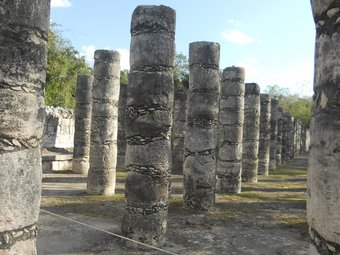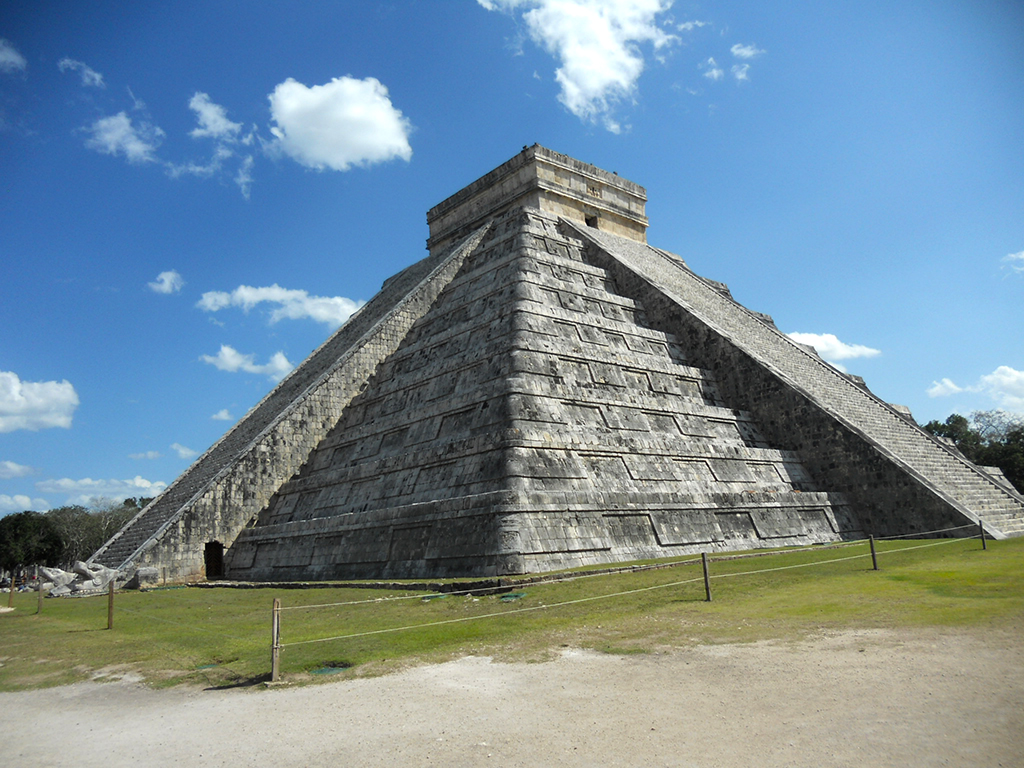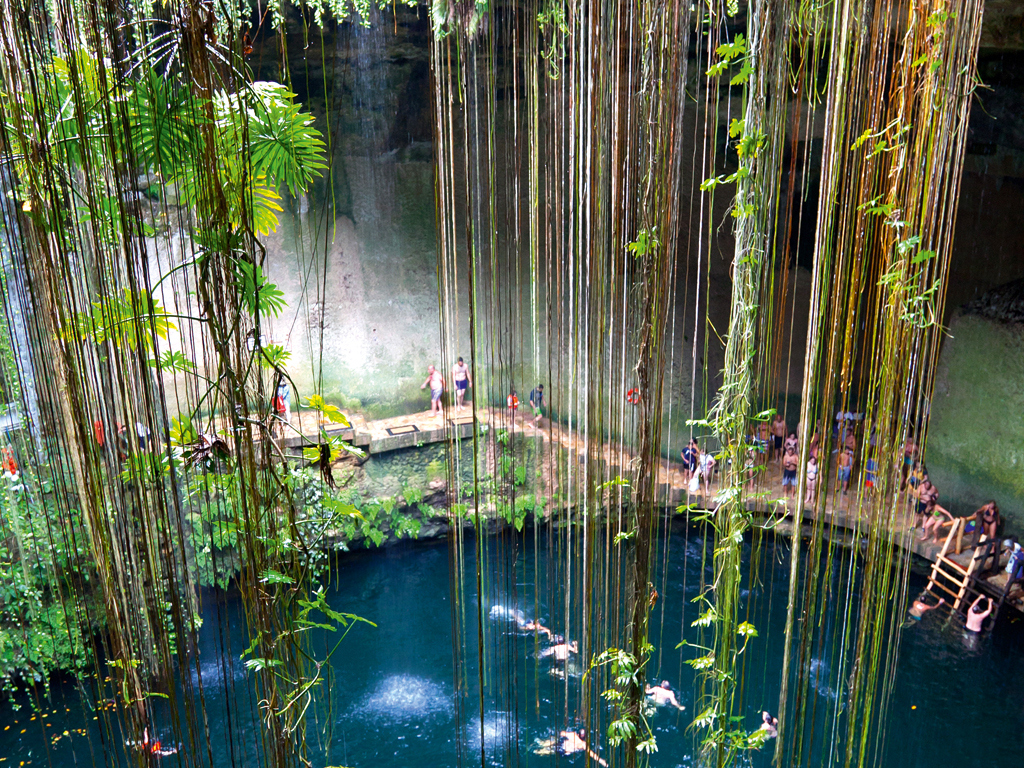Chichén Itzá
History
Around 400 AD, it was founded by the Mayan tribes from the Guatemalan highlands. From 400 to 1250 AD it was an economic, political and religious center of outstanding importance. Around 1000 AD the branch of the Toltec Itzá immigrated to the region. They prevailed with violence against the Maya, but didn’t destroy their architecture or religion. The Toltecs named their new settlement Chichen Itza (city of Itza) on the edge of the fountain.
The fact that the Toltecs, didn’t destroy the architecture of the Maya during the takeover of the region, was one of the peculiarities Chichén Itzá - the unifying coexistence of Mayan and Toltec architecture. The Toltecs took the Mayan artists in their services, but left them far-reaching freedoms, which occurred in the 200 years after the Toltec settlement to a Mayan Toltec renaissance.
Chichen Itza was already partially abandoned by its inhabitants when the Spaniards arrived in 1546, the region. However, since the Spaniards had no real use for the site, it remained for centuries hidden in the dense jungle until it was rediscovered in 1841 by Catherwood and Stephens. in 1885 Chichen Itza was acquired by Edward Thompson, the former US consul in Mérida and amateur archaeologist. Fortunately, the site was not used by the Spaniards as a quarry (as the neighboring Izamal was). Although the buildings were partially collapsed and overgrown by the jungle, but with the US Carnegie Institutes financial assistance, and the guidance of renowned Maya scholar Sylvanus G. Morley the area was slowly restored. Yet to date, only around half of the main structure is exposed.
Chichen Itza and the Pirámide de Kukulcán
Chichen Itza covers an area of 8 square kilometers, with the distinction being made between “Viejo” (old) and, “Nuevo” (New) Chichén Itzá. However, this distinction can be misleading because there are older and younger ruins are in two parts.
Chichén Itzá is highly visible from all angles as the 30 meter structure, the Pirámide de Kukulcán or the Kukulkan Pyramid, or also known as El Castillo "the castle" can be seen from most places in the area. The Maya began to build it in 800 AD, and it was completed between 1100-1300 by the Toltecs. This architectural masterpiece is unmistakable from the other two structures. An interesting fact about the pyramid is that there is an older part inside the pyramid and the outer part which was built later.
It’s an important Mayan structure was built with ties to astronomy and astrology so the Kukulkan Pyramid is a perfect combination of space and time! The four sides of the pyramid are 45° stairs up to the Temple House. There is a total of 364 steps which corresponds to the number of days in a solar year.
The sides of the pyramid are decorated with decorative panels, exactly 52 of them, which symbolizes the 52-year cycle of the Mayan calendar. In addition, each is a pyramid side of nine platforms, symbolizing the nine levels of the Mayan underworld. These nine levels are bisected by the staircase, which gives 18 and sending you the 18 months (of 20 days) of the Mayan calendar year.
The lower end of the north staircase is guarded by two large serpent heads. On the two days of the year where day and night are of equal length. For example, on 21 March and on 22 or 23 September, the snake heads shoe their true form at 16:30 as the low sun casts their shadow band down the northern staircase stairs. This makes it seem as though the snake is descending from above and leaving the temple house, a process that takes 3 hours. This symbolizes the Kukulkan deity descending to earth.
Chichen Itza has a lot offer! For example, the Juego de Pelota (Ball Court), which is 91 meters long and 36 meters wide, the best preserved and largest in Mexico. Also, next to the ruins there is a steam bath and some temples Templo del Hombre Barbado (the Bearded Man Temple), Templo de los Tigres (Temple Of The Jaguars), Templo de las Mesas (Temple of the tables) to name a few.
More information about the country and the people of Mexico you can find here.
Tours to experience this highlight
Mexico Highlights
Wonders of the Caribbean
Treasures of Mexico
The Mayan Trail
Discover the Mayas Self-Drive / Private Tours:
Short Round through Yucatán
Magical Mexico




